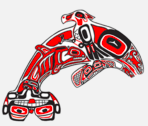Joe (Wahalatsu?) Seymour Jr.


We are descendants of the maritime people who lived along the shores and watersheds of the seven southernmost inlets of Puget Sound for many thousands of years. Our culture is still very much connected to this aquatic environment.
On Christmas Day, 1854 the Treaty of Medicine Creek was negotiated in Chinook Jargon, a trade language inadequate to convey the complex issues of treaty making. This treaty, signed on December 26, was the first in Washington Territory. Approximately 660 people attended the negotiations, although it was raining and miserably cold. More could not attend because of the severity of the weather.
The ancestral lands ceded to the United States government (by the Squaxin Island, Nisqually and Puyallup Tribes) in the 1854 Treaty of Medicine Creek included 4,000 square miles, or 2,560,000 acres, extending from the Cascades on the east to the Black Hills on the west, and from Mt. St. Helens to the Skookumchuck and Chehalis Rivers on the south and Wilke’s Portage Vashon Island and the divide between the Puyallup and White Rivers on the North. Three small reserves. Only one small island, four and a half miles long and a half mile wide was reserved as the main area for all of our people to live. The island was named after the people of Case Inlet and became known as Squaxin Island.
